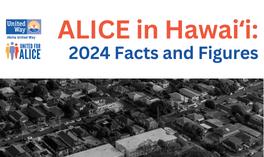The Physical Activity and Nutrition (PAN) Plan 2030 Tracker supplements the Hawaiʻi PAN Plan 2030, which is a guide to increasing physical activity and healthy eating in the state. The long-term goal is to reduce overweight, obesity, and chronic disease among all Hawaiʻi residents. The PAN Plan envisions a future for Hawaiʻi in which all people are physically active, eat healthy foods, and live in healthy communities.
The PAN Plan Tracker combines 50 indicators in one location to provide an easy resource for monitoring the physical activity and nutrition health of the residents of Hawaiʻi. Targets are given for each measure as an aim for the year 2030. The goals are to reduce burden of disease, increase years of healthy life, increase resilience to deadly viruses, and reduce health disparities.
Here are some interesting facts from the tracker in Hawaiʻi:
- Among public high school students, 7.2% attended daily physical education classes at school. This is lower than the average US value of 19.0%.
- In 2021, 68.3% of adults reported their neighborhood supports physical activity with sidewalks, bike lanes, paths, or trails for walking or cycling. The estimate ranges from 33.2% in Hawaiʻi County to 79.9% in Honolulu County.
- The percent of adults who reported receiving free food from a food pantry, church, soup kitchen, or shelter in the past 12 months more than doubled from pre-pandemic levels in 2019 (5.2%) to 2021 (11.8%).
- In 2021, 80.9% of mothers reported their infant was still breastfeeding at 8 weeks postpartum. This increases to 98.1% among Japanese mothers but falls to 61.5% among Other Pacific Islander mothers.




